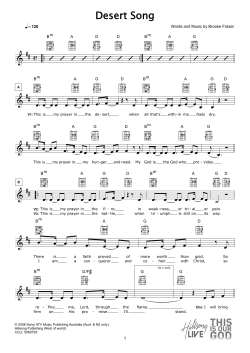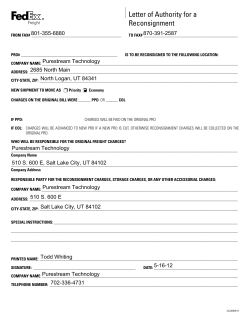
Having Fun with Software Defined RF Test Tools Chuck Zappala KE7SA
Having Fun with Software Defined RF Test Tools Presented by Chuck Zappala KE7SA Copyright 2013 For Communications Academy Seattle, WA April 13, 2013 Framework • • • • Software Defined Test Equipment Signal Hound Spectrum Analyzer miniVNA Pro Vector Network Analyzer Demonstrations What is a Spectrum Analyzer? • Visual display of the radio spectrum and the amplitude of radio signals and other characteristics Traditional Spectrum Analyzers Signal Hound USB SA44B Software Defined 4.4 GHz Spectrum Analyzer www.signalhound.com $919 Features RF Frequency Range: 1 Hz to 4.4 GHz Low noise amplifier available above 500 KHz Wide dynamic range: -151 dBm to +10 dBm Resolution bandwidths (RBW) of 0.1 Hz to 250 KHz and 5 MHz Includes a High Dynamic Range Measuring Receiver 0.25 dB relative accuracy 0 dBm to -125 dBm, 150 KHz to 1 GHz; 0 dBm to -115 dBm, 1 GHz to 4.4 GHz Adjustable digital audio filters No external power supply needed - draws power from USB Digital Signal Processing happens on the PC Additional Third-Party Software Packages are available Free Application Programming Interface (API) I/Q Data up to a 240 KHz bandwidth Frequency Sweeps up to 140 MHz per second Windows XP, Windows 7 or 8 required AM and FM Demodulation Measurements USB 2.0 communications at 480 MBPS Demodulates AM/FM/SSB/CW audio in real-time Measures 8 inches long Weighs 10 ounces Tracking Generator Option Upgrade your USB-SA44B to a Scalar Network Analyzer $599 RF Frequency Range: 10 Hz to 4.4 GHz Amplitude range: -30 dBm to -10 dBm Step sizes from 10 Hz to 10 MHz Sweep up to 700 frequency points per second with the USB-SA44(B) No external power supply needed - draws power from USB Software and hardware included for one low price Write your own software with the free Application Programming Interface (API) Compatible with Windows XP, 7, or 8 operating systems Measures 8 inches long Weighs 10 ounces Caveats The Signal Hound is not intended for use with spread spectrum signals. If the modulated signal is wider than 20 MHz, amplitude accuracy is not guaranteed. Frequency-hopping and pulsed signal measurements may require special settings. Higher models (and price) are better. Rigol DSA815 1.5 GHz may be better? $1,295 http://www.rigolna.com Requires External DC Isolation What’s Inside? Display Computer Software Control Analog Analog to Digital User Interface Measuring Channel Power Band Limit Lines Measuring Receiver Utility Questions? Answers? Demonstration What’s a VNA? A Vector Network Analyzer (VNA) is used for measuring amplitude and phase characteristics of an electrical network. These characteristics include: S-parameters*, magnitude and phase, standing wave ratios (SWRs), insertion loss or gain, attenuation, group delay, return loss, reflection coefficient, and gain compression. High priced VNAs can measure frequencies from 5 Hz to 110 GHz. VNA hardware consists of a sweeping signal source (usually internal), a test set to separate forward and reverse test signals, and a multichannel, phase coherent, highly sensitive receiver, making a VNA a two port device, out and in. * Scattering parameters or S-parameters (the elements of a scattering matrix or S-matrix) describe the electrical behavior of linear electrical networks when undergoing various steady state stimuli by electrical signals. Traditional VNA What’s an SNA? A scalar network analyzer (SNA) measures only the amplitude portion of the S-parameters, and so obtains measurements such as: Transmission gain and loss, return loss, and SWR. The VNA has more extensive measurement capability, but an SNA may be a more cost effective measurement tool for revealing simpler out-of-specification measurements. Example: MFJ-259 series. Like VNAs, SNAs require an external or internal sweeping signal source and signal-separation hardware, but they just need simple amplitude-only detectors, rather than complex (and more expensive) phase coherent detectors. Traditional SNAs MFJ-259B does not sweep the RF. It’s manual. miniVNA Pro http://www.w4rt.com/Misc/miniVNAPRO.htm $54999 Software Defined! Software-Defined HF/VHF Network & Antenna Analyzer • Measurements for VSWR, RL, Rs, Z +/-jx, Phase, Cable, R/L/C, Filters, Cavities, Traps • Frequency range 0.1 to 200MHz, up to 1.5 GHz with Extender • Extended dynamic range: up to 90dB for transmission, up to 50dB for reflection • Calibration using open/short-load for accurate results • Range of impedance Z from 1 to 1000 Ohms • Two ports VNA with S11 and S12 display and data can be saved to a file • I/Q DDS Generator with 0 dBm output power • Two separate RF outputs for I/Q supporting SDR experiments and IMD measurements with independent attenuator from 0 to 55dB, phase angle adjustable to 1° precision • Built in Bluetooth® Adaptor (Class 1) for wireless remote measurements • Built in Lithium-Ion 1000mAh battery, (4 hours full-scan operation) • Built in battery charger (up to 400mA) • Low power consumption, < 220mA @3.6V, (analyzer mode using USB port) • Power save mode • SMA connectors for better isolation • Boot loader for future firmware upgrades • User friendly interfaces for PC Windows, Linux, Apple and Android; 3rd Party Software • Integrated Smith Chart in software • Export data in several formats: JPG, Excel, ZPLOT, S2P, PDF What’s Inside? miniVNA Pro with Laptop miniVNA Pro with Android By Dan Toma (YO3GGX) http://www.yo3ggx.ro/ miniVNA Pro with Android By Dan Toma (YO3GGX) http://www.yo3ggx.ro/ miniVNA Pro with Android By Dan Toma (YO3GGX) http://www.yo3ggx.ro/ Can Your Analyzer do this? miniVNA Pro Extender miniVNA Pro Extender Frequency Range: 200 — 1500 MHz Dynamic Range: 60dB @ 1GHz Operation modes: Reflection and Transmission, S11 and S21 Harmonics suppression: -35dB Directional Coupler: Internal Connectors: Two, SMA female Output Power: -10dBm Power Consumption: approx. 150 mA 3rd Party Software http://ac6la.com/zplots.html Reflection, Transmission and Smith Chart Measurements Problem at KE7SA Exported PDF Plots from miniVNA Normal SWR and RL “Double Dip” SWR and RL 14.250 14.175 Measurement on the Ground Measurement on the Tower Note 75 KHz Frequency Shift Testing a Tri-Band Radiator Element Mosley MP-33-N The World Famous N7OYY Antenna Test Range miniVNA Pro Blue Masking Tape 20 Meter Band Sweep Three Band Sweep Troubleshooting on the Roof So, what was the problem? 60 feet of zinc strip on roof peaks for roof moss control, acting like an artificial ground relative to the antenna. Zinc strips removed and “double-dip” gone. Questions? Answers? Demonstration
© Copyright 2025





















